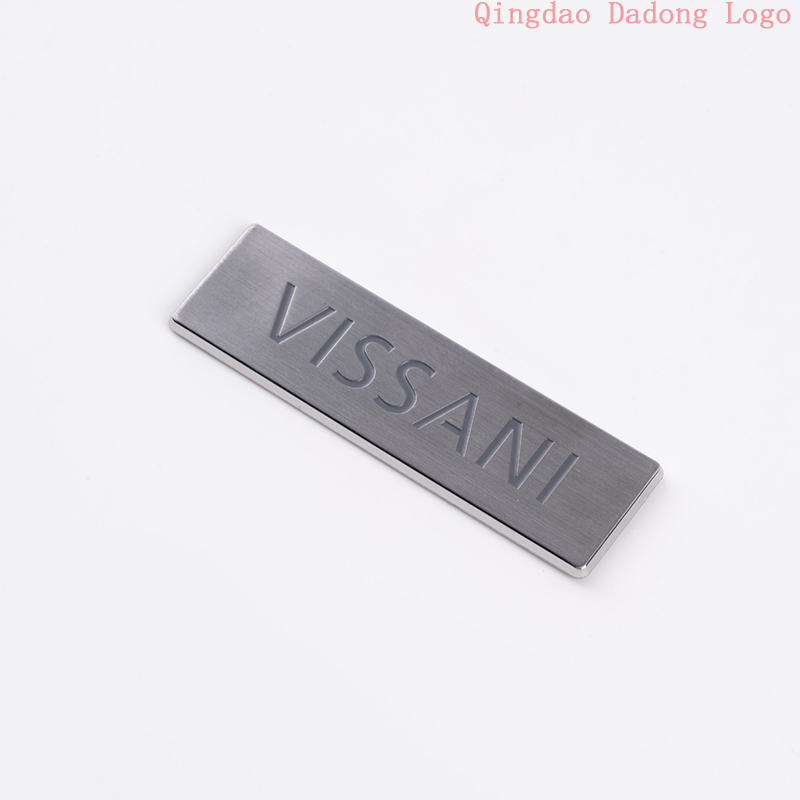NEWS
Production process of high gloss (brushed) signs and aluminum signs
Writer:admin Time:2023-06-05 09:54 Browse:℃
Aluminum decorative parts, aluminum signs, aluminum tags
(1) Characteristics
Variety of effects and colors: spray painting, printing, spot painting, electroplating, rotten board, oxidation
(2) Process
Aluminum plate wire drawing
It is actually a repair process that can also have an aesthetic effect. According to the effect, it can be divided into straight lines, random lines, ripples, spiral lines, CD lines, twill lines, etc. And generally, wire drawing is done before electroplating. Straight wire drawing refers to the process of machining straight lines on the surface of aluminum plates using mechanical friction. Continuous straight lines can be obtained by continuous horizontal linear friction on the surface of the aluminum plate using a cleaning cloth or stainless steel brush. Changing the wire diameter of the stainless steel brush can result in different thicknesses of patterns. Random pattern wire drawing is a type of irregular and non obvious matte wire pattern obtained by rubbing the aluminum plate forward, backward, left, and right under the high-speed running copper wire brush. This type of processing requires high surface requirements for aluminum or aluminum alloy plates. Ripples are generally made on brushing or friction machines. By utilizing the axial motion of the upper group of grinding rollers, a wavy pattern is obtained by grinding and brushing on the surface of aluminum or aluminum alloy plates. Rotational pattern, also known as optical rotation, is a type of silk pattern obtained by rotating and polishing the surface of aluminum or aluminum alloy plates using cylindrical felt or grinding nylon wheels mounted on a drilling machine, kerosene mixed with polishing paste. Mainly used for decorative processing of circular signs and small decorative dials. Thread is a small motor equipped with a circular felt on the shaft, which is fixed on the desktop at an angle of 60 degrees to the edge of the table. Additionally, a drag plate with a fixed aluminum plate is made, and a polyester film with a straight edge is attached to the drag plate to limit the progress of the thread. By utilizing the rotation of the felt and the linear motion of the drag plate, a thread pattern with a consistent width is formed on the surface of the aluminum plate.
Anodizing
Anodic treatment, also known as anodic coloring treatment, is also known as corrosion (rotten board) treatment. The anodizing of aluminum is a layer of oxide film formed on the metal surface by the action of electric current, with rich colors, beautiful colors, good electrical insulation, hardness, wear resistance, and extremely high corrosion resistance. The basic principle is:
Under the action of the electrode and electrolyte, the aluminum ions on the surface will be decomposed into the electrolyte and mixed with the pigment ions. Then, the electrode will be reversed, causing the aluminum ions and pigment ions to reattach to the surface of the aluminum component. This way, a thin oxide film with uniform color and strong adhesion can be coated. During this process, attention should be paid to controlling the time of electrode action to maintain the thickness of the aluminum component unchanged.

Sandblasting treatment
Sandblasting treatment is used to obtain a surface with film light decoration or fine reflective surfaces to meet special design needs such as soft gloss. At the same time, it can make the combination of the printing material and substrate stronger during screen printing. Sandblasting is usually carried out in a dedicated sandblasting machine. According to the requirements of sand surface fineness, select the appropriate mesh of quartz sand and spray it to make a proper sand surface. Uniform and moderate sandblasting treatment can basically overcome common defects on the surface of aluminum materials.
High gloss cutting.
Strictly speaking, the processing of high gloss aluminum signs does not belong to pre-treatment, but rather post-processing. High gloss processed parts, due to their high glossiness and combined with coarse and fine knife patterns, can greatly enhance the decorative effect using the principle of refraction, and have been popular in the past two years. High gloss cutting is a process in which CNC machine tools are used to quickly cut signs and other decorative parts to produce high gloss surfaces. During the cutting process, heating can cause a layer of oxide film to form on the aluminum surface, protecting the machined surface from long-term brightness. High gloss processing equipment is relatively simple and can be designed and manufactured specifically, or modified using milling and drilling machines.
During processing, the workbench should be able to feed quickly, with a tool speed of 7000~10000 rpm and a blade angle of around 140 °. There are also special requirements, and multiple different angles of tools can be used. It is reported that Japan's "universal high gloss machine" is equipped with a set of 12 different angle cutting tools, with blade angles of 30 °, 45 °, 60 °, 75 °, 90 °, 130 °, 140 °, 160 °, etc. Cutting angle on decorative parts
The design of the degree is related to the thickness of the aluminum plate and the size of the turning angle, generally ranging from 45 ° to 30 °.
The application of high gloss cutting on aluminum labels has two effects:
The circular pattern of a font
Using natural diamond as a cutting tool, circular patterns are cut through the rapid rotation of the tool, with a rotation speed of 6000-9000 revolutions. Generally used for flat raised fonts, the height of the raised font is around 0.3. There are no clear numerical requirements for the size, height, and spacing of the font, but the spacing should not be too small, which can easily cause stamping and typesetting problems. Plate thickness of 0.4 or above is usually chosen, and 0.3 thickness can also be made, but it needs to be imported from Japan to be easy to use.
CATEGORIES
LATEST NEWS
CONTACT US
WhatsApp: +8615806503075
Tel: +8615806503075
Email: percy@dadonglogo.com
Addr: 7 Tonghe Road, Pingdu, Qingdao
